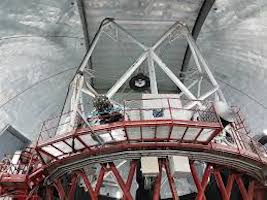
MELBOURNE (TIP): Scientists using an intragalactic speed gun have detected five new planets, relatively close to Earth, and one of them is orbiting a star’s habitable zone, where conditions are suitable for life. It would take only 12 years to reach the planets when travelling at the speed of light. Scientists analysing about 6,000 measurements of the star Tau Ceti’s velocity, believe that slight inconsistencies in its speed and direction are being caused by the gravitational pull of other celestial bodies, The Australian reported. “We believe the star is going very slightly backwards and forwards and shows the evidence for doing that at five different periods,” said professor Chris Tinney of the University of New South Wales. “We think five different planets are going around that star tugging on it making it move backwards and forwards,” Tinney said.
An international team of researchers from Australia, Chile, the UK and the US believe one of the five planets orbiting Tau Ceti is within the star’s habitable zone, where conditions are suitable for life. The planet in the habitable zone has a mass about five times that of Earth, making it the smallest known planet orbiting in the “Goldilocks” zone — where conditions are just right — of any Sun-like star.
Experts closing in on dark matter?
Scientists could be closing on to unravel the mystery behind the dark matter, who claim they may solve the puzzle soon by using exquisite techniques to tighten the constraints. A colloquium brought together over 100 cosmologists, particle physicists and observational astrophysicists in the hunt to determine what is dark matter.




Be the first to comment